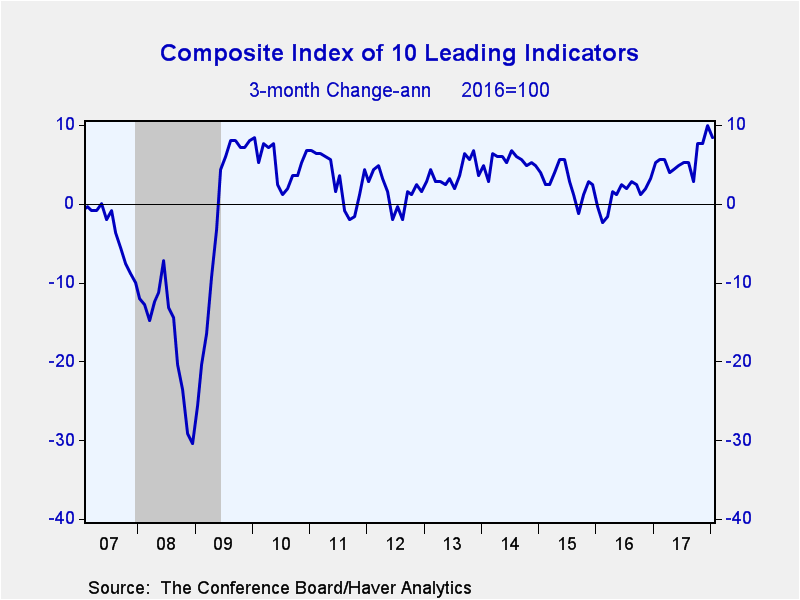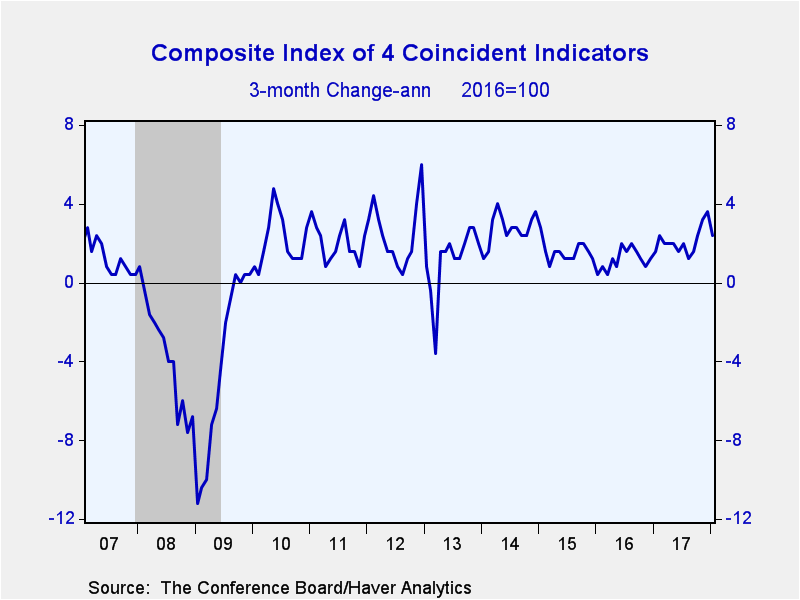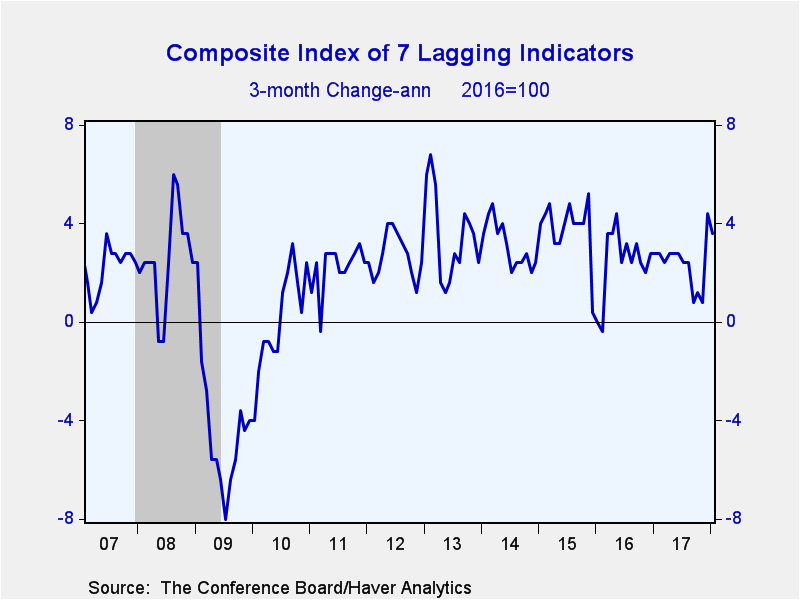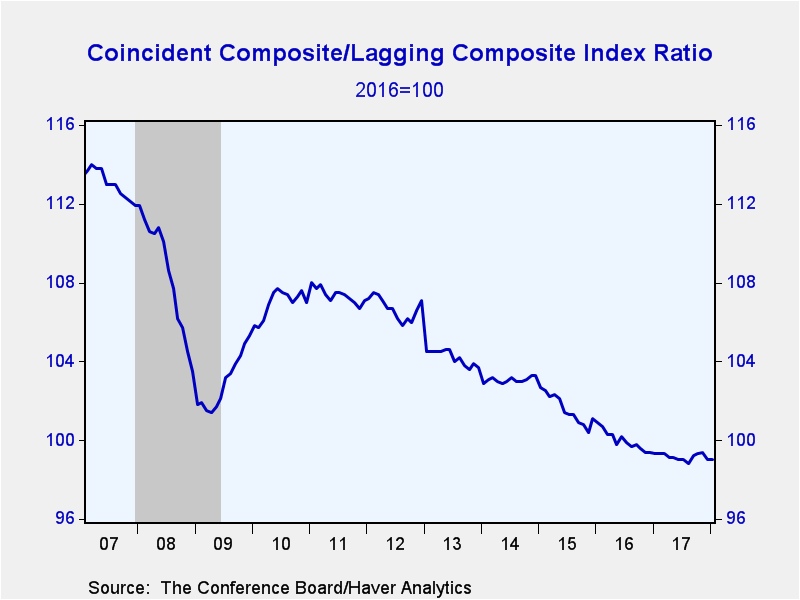 Global| Feb 22 2018
Global| Feb 22 2018U.S. Leading Economic Indicators Surge
by:Tom Moeller
|in:Economy in Brief
Summary
The Conference Board's Composite Index of Leading Economic Indicators strengthened 1.0% during January. That raised the y/y change to 6.2%, its strongest since October 2014. The latest increase followed an unrevised 0.6% December [...]
The Conference Board's Composite Index of Leading Economic Indicators strengthened 1.0% during January. That raised the y/y change to 6.2%, its strongest since October 2014. The latest increase followed an unrevised 0.6% December gain. A 0.6% rise had been expected in the Action Economics Forecast Survey.
Most of the component series in the leading index rose. The ISM new orders index, building permits, stock prices and the leading credit index added equally to the overall increase, while the interest rate spread between 10-Year Treasuries & Fed funds, and consumer expectations for business/economic conditions added just slightly. Fewer initial unemployment insurance claims and more nondefense capital goods orders added minimally. The average workweek and orders for consumer goods held steady.
The Index of Coincident Economic Indicators inched 0.1% higher last month (2.2% y/y), following an unrevised 0.3% December rise. Personal income less transfer payments, business sales and payroll employment contributed positively to the index. Industrial production exhibited a minimal negative influence. Three-month growth in the index eased to 2.4% (AR), but still was improved versus 1.3% in 2015.
The Index of Lagging Economic Indicators gained 0.1% (2.5% y/y) last month after an unrevised 0.7% rise. The services CPI, the consumer credit/personal income ratio, and the prime rate charged by banks had positive effects on the index, while the average duration of unemployment and C&I loans outstanding contributed negatively. Three-month growth in the lagging index remained strong at 3.5%, up from 2.6% last year.
The ratio of coincident-to-lagging indicators is often considered to be a leading indicator of economic activity. As economic slack diminishes relative to current performance, the ratio will rise. It held steady last month near the 1975 low.
The Conference Board figures are available in Haver's BCI database; the components are available there, and most are also in USECON. The expectations are in the AS1REPNA database. Visit the Conference Board's site for coverage of leading indicator series from around the world.
The U.S. Economy after the Global Financial Crisis from Fed Vice Chairman Randal K. Quarles can be found here.
| Business Cycle Indicators (%) | Jan | Dec | Nov | Jan Y/Y | 2017 | 2016 | 2015 |
|---|---|---|---|---|---|---|---|
| Leading | 1.0 | 0.6 | 0.4 | 6.2 | 4.1 | 1.2 | 4.2 |
| Coincident | 0.1 | 0.3 | 0.2 | 2.2 | 1.7 | 1.3 | 2.2 |
| Lagging | 0.1 | 0.7 | 0.1 | 2.5 | 2.6 | 2.9 | 3.7 |
Tom Moeller
AuthorMore in Author Profile »Prior to joining Haver Analytics in 2000, Mr. Moeller worked as the Economist at Chancellor Capital Management from 1985 to 1999. There, he developed comprehensive economic forecasts and interpreted economic data for equity and fixed income portfolio managers. Also at Chancellor, Mr. Moeller worked as an equity analyst and was responsible for researching and rating companies in the economically sensitive automobile and housing industries for investment in Chancellor’s equity portfolio. Prior to joining Chancellor, Mr. Moeller was an Economist at Citibank from 1979 to 1984. He also analyzed pricing behavior in the metals industry for the Council on Wage and Price Stability in Washington, D.C. In 1999, Mr. Moeller received the award for most accurate forecast from the Forecasters' Club of New York. From 1990 to 1992 he was President of the New York Association for Business Economists. Mr. Moeller earned an M.B.A. in Finance from Fordham University, where he graduated in 1987. He holds a Bachelor of Arts in Economics from George Washington University.










